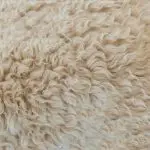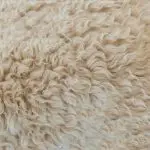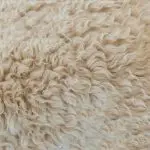When it comes to staying warm in the cold, you want a material that feels like a cozy hug. But which is warmer: faux fur or sherpa?
This comparison dives deep into the insulation properties, environmental impact, and durability of both materials.
By understanding the composition of faux fur and sherpa, you'll gain insight into their effectiveness in retaining heat.
Whether you're seeking mastery in the art of staying warm or simply want to make an informed choice for your next winter garment, this exploration will provide the knowledge you need to decide which material will keep you snug and stylish all season long.
Key Takeaways
- Faux fur is designed to mimic the insulating properties of real fur and provides excellent heat retention.
- Sherpa is known for its exceptional warmth, effectively regulates body temperature, and is adept at wicking moisture away from the body.
- Sherpa outperforms faux fur in terms of thermal regulation and moisture management.
- Faux fur is more resistant to matting and pilling compared to Sherpa and has a longer lifespan.
The Composition of Faux Fur
Faux fur is typically made from synthetic fibers designed to imitate the look and feel of real animal fur. The manufacturing process involves creating these fibers to closely resemble the texture and appearance of genuine fur, often using a combination of acrylic, modacrylic, and polyester. This allows for a wide variety of styles and colors while eliminating the need for animal fur in fashion.
When it comes to animal welfare implications, faux fur manufacturing offers a more ethical alternative to using real animal fur. By utilizing synthetic materials, it reduces the demand for fur from animals, thereby decreasing the negative impact on wildlife. This approach aligns with the growing concern for ethical and sustainable fashion practices.
Understanding the composition of faux fur provides insight into its manufacturing process and the positive implications for animal welfare. It allows for the creation of luxurious and fashionable items while promoting ethical choices in the fashion industry.
The Composition of Sherpa
When considering the composition of Sherpa, you'll find that it's typically made from synthetic materials designed to mimic the texture and warmth of traditional wool fabrics.
Sherpa fabric has its origins in Tibet, where it was traditionally woven from the fleece of Tibetan yaks to provide warmth in the harsh Himalayan climate.
However, modern Sherpa fabric is more commonly crafted from polyester, acrylic, or a blend of both, offering a cruelty-free alternative to animal-derived materials.
The synthetic composition of Sherpa fabric allows for easy care and maintenance, making it a practical choice for everyday use. Additionally, its availability in various colors and patterns provides versatility in design, catering to a wide range of style preferences.
For those seeking sustainable options, recycled polyester Sherpa fabric is also becoming increasingly popular, offering an eco-friendly alternative without compromising on the fabric's plush and insulating properties.
Insulation Properties of Faux Fur
The insulation properties of faux fur make it a popular choice for those seeking warmth and comfort, especially when compared to the synthetic composition of Sherpa fabric. Faux fur is designed to mimic the insulating properties of real fur, providing excellent heat retention. This makes it an ideal choice for cold weather garments and accessories.
When considering insulation, it's important to note that faux fur manufacturing has made significant advancements, resulting in improved warmth and comfort. Manufacturers have developed techniques to create faux fur that closely resembles the insulating qualities of real animal fur, while also addressing animal welfare concerns. These advancements ensure that faux fur not only provides exceptional warmth but also meets ethical standards.
With these developments, faux fur has become a preferred choice for individuals seeking both insulation and a humane alternative to real animal fur. As a result, faux fur continues to be a top contender when discussing warmth and insulation in comparison to other materials like Sherpa.
Insulation Properties of Sherpa
When it comes to insulation properties, it's important to consider the effectiveness of Sherpa material in keeping you warm.
Sherpa is known for its exceptional warmth, making it a popular choice for cold weather garments.
Understanding how Sherpa compares to other materials in terms of warmth will give you valuable insights into its insulation properties.
Sherpa Insulation Effectiveness
To determine the warmth of Sherpa, you can compare its insulation effectiveness to that of faux fur. Sherpa insulation is highly effective in providing warmth and comfort, making it a popular choice for cold-weather clothing and accessories.
Here are three key reasons why Sherpa insulation is highly effective:
- Thermal Regulation: Sherpa fabric has excellent insulation properties that help regulate body temperature, keeping you warm in cold conditions without causing overheating.
- Moisture Management: Sherpa is adept at wicking moisture away from the body, ensuring that you stay dry and comfortable even during high levels of physical activity.
- Layering Ability: Sherpa's insulation effectiveness makes it an ideal choice for layering in extreme cold, providing additional warmth without adding excessive bulk.
Sherpa's insulation properties make it a reliable and efficient choice for staying warm in chilly environments.
Sherpa Warmth Compared
When comparing warmth, Sherpa insulation outperforms faux fur due to its superior thermal regulation and moisture management.
Sherpa fabric is designed to mimic the warmth and comfort of traditional Sherpa wool, making it an excellent insulator. Its high-pile, deep-pile, and fuzzy texture create air pockets that trap heat, providing exceptional warmth. Sherpa's ability to regulate body temperature makes it an ideal choice for cold weather.
In contrast, faux fur lacks the same insulating properties and tends to trap moisture, leading to a clammy and less warm feeling.
Sherpa's warmth is unmatched when compared to faux fur, making it the preferred choice for those seeking superior insulation in their clothing and accessories.
Environmental Impact of Faux Fur
When considering the environmental impact of faux fur, it's important to examine the production process, the chemicals used, and the pollution generated.
Comparing the resource consumption of faux fur with other materials also sheds light on its ecological footprint.
Understanding these factors will help you make informed choices about the warmth of faux fur and its impact on the environment.
Faux Fur Production
You can explore the environmental impact of faux fur production to understand its effects on the planet. When considering the production of faux fur, it's crucial to acknowledge its potential consequences on the environment and animal welfare.
Here are three key points to consider:
- Resource Intensity: The production of faux fur often requires significant amounts of energy and resources, contributing to environmental strain and carbon emissions.
- Chemical Usage: The manufacturing process of faux fur may involve the use of potentially harmful chemicals, impacting both the environment and the health of workers involved in the production.
- Waste Generation: Faux fur production can result in the generation of non-biodegradable waste, adding to the already concerning issue of textile waste in landfills.
Understanding these aspects can provide insight into the broader environmental implications of faux fur production.
Chemicals and Pollution
Considering the environmental impact of faux fur production, it's important to address the potential consequences of chemical usage and pollution. Chemical exposure and ethical sourcing are crucial aspects to consider. The production of faux fur often involves the use of harmful chemicals such as volatile organic compounds, formaldehyde, and dyes, which can have detrimental effects on the environment and human health. Additionally, the release of these chemicals into waterways during the production process can contribute to pollution and ecosystem damage. Ethical sourcing of materials is essential to minimize the environmental impact of faux fur production, ensuring that the materials are obtained in a sustainable and responsible manner. Below is a table summarizing the potential environmental impact of faux fur production:
| Environmental Impact | Description |
|---|---|
| Chemical Exposure | Harmful chemicals used |
| Pollution | Release into waterways |
| Ethical Sourcing | Sustainable material sourcing |
Resource Consumption Comparison
Addressing the environmental impact of faux fur production, it's important to evaluate the resource consumption comparison between faux fur and sherpa, focusing on factors such as energy usage and material sourcing.
When comparing the resource efficiency of faux fur and sherpa, consider the energy-intensive nature of faux fur production, which often involves the use of petroleum-based products and high levels of electricity.
Additionally, the environmental footprint analysis should take into account the material sourcing for faux fur, as it often involves the use of non-renewable resources and chemicals that can contribute to environmental degradation.
Lastly, the production of faux fur may result in higher water usage compared to sherpa, further impacting the environment.
These factors highlight the importance of considering resource consumption in evaluating the environmental impact of faux fur.
Environmental Impact of Sherpa
When assessing the environmental impact of Sherpa, how does its production compare to other materials in terms of sustainability? Sherpa fabric is often made from synthetic materials like polyester, which are derived from non-renewable resources like petroleum. This manufacturing process consumes a significant amount of energy and produces greenhouse gas emissions. While some companies are making efforts to use recycled polyester in Sherpa production, the overall environmental sustainability of Sherpa is still a concern. On the other hand, the ethical sourcing of Sherpa, particularly in relation to labor practices, has been a focus for some manufacturers in recent years. Here's a comparison of the environmental impact of Sherpa fabric with other materials:
| Environmental Impact | Sherpa | Faux Fur |
|---|---|---|
| Resource Consumption | High | High |
| Greenhouse Gas Emissions | Significant | Significant |
| Use of Non-renewable Resources | Yes | Yes |
It's crucial to consider the environmental impact of fabrics like Sherpa and faux fur when making purchasing decisions, especially in the context of increasing awareness about sustainability and ethical sourcing.
Durability of Faux Fur
If you want a durable option for warmth, faux fur may be a better choice than Sherpa. When comparing the durability of faux fur and Sherpa, there are a few key points to consider:
- Longevity: Faux fur tends to be more durable than Sherpa, as it's often made from synthetic materials that can withstand regular wear and tear. This means that your faux fur garment or accessory is likely to maintain its quality and warmth over a longer period of time compared to Sherpa.
- Resistance to Wear: Faux fur is often more resistant to matting and pilling compared to Sherpa, which can help it maintain a plush and luxurious appearance even after repeated use.
- Maintenance Tips: To ensure the durability of faux fur, it's important to follow specific maintenance tips such as gentle spot cleaning, avoiding excessive heat when drying, and storing it properly during off-seasons. These practices can help extend the lifespan of your faux fur items.
When choosing between faux fur and Sherpa for durability, it's clear that faux fur has the advantage in terms of longevity and resistance to wear. By following proper maintenance tips, you can further enhance the durability of your faux fur items.
Durability of Sherpa
Considering the durability of Sherpa, you'll find that it provides a soft and cozy texture, making it a popular choice for warmth and comfort. Sherpa fabric is known for its longevity and ability to withstand regular use. Here's a comparison of Sherpa's durability in use:
| Durability Aspect | Sherpa |
|---|---|
| Wear and Tear | Resistant to pilling and retains softness over time |
| Washing | Holds up well to machine washing and retains shape |
| Longevity | Durable fabric that maintains quality over multiple uses |
Sherpa's ability to resist pilling ensures that the fabric remains smooth and intact, even after prolonged use. Additionally, it maintains its softness over time, making it a reliable choice for long-term use. When it comes to washing, Sherpa holds up well to machine washing, retaining its shape and texture. Its durability ensures that it remains in excellent condition even after multiple washes. Overall, Sherpa's longevity and ability to maintain quality over time make it a durable option for various uses, whether in clothing, blankets, or other items designed for warmth and comfort.
Frequently Asked Questions
Are There Any Ethical Concerns Regarding the Production of Faux Fur and Sherpa?
When considering ethical concerns and the environmental impact of faux fur and sherpa production, it's important to research the practices of specific brands. Look for companies committed to sustainable and cruelty-free practices.
How Do Faux Fur and Sherpa Compare in Terms of Breathability and Moisture-Wicking Properties?
Faux fur and sherpa differ in breathability and moisture-wicking properties. Faux fur tends to be less breathable and moisture-wicking compared to sherpa, which is known for better ventilation and moisture control.
Can Faux Fur and Sherpa Be Easily Cleaned and Maintained?
To keep faux fur and sherpa clean and durable, follow washing instructions carefully. For stain removal, try spot cleaning with a mild detergent. To prevent shedding, gently brush the fabric. Proper care ensures longevity and maintained quality.
Are There Any Differences in the Cost of Production and Retail Price Between Faux Fur and Sherpa?
The cost of production for faux fur is generally higher than sherpa due to the intricate manufacturing process. As a result, the retail price for faux fur products tends to be higher compared to sherpa items.
Can Faux Fur and Sherpa Be Recycled or Repurposed at the End of Their Lifespan?
When it comes to recycling options and repurposing possibilities, both faux fur and sherpa can be repurposed into new products like blankets, pet bedding, or insulation. Recycling options include donating to thrift stores or textile recycling programs.
- How Does Ring Spun Cotton Affect Garment Fit and Shape Retention? - August 13, 2024
- What Are the Challenges in Producing Ring Spun Cotton? - August 13, 2024
- Is Ring Spun Cotton Suitable for Plus-Size Clothing? - August 13, 2024







